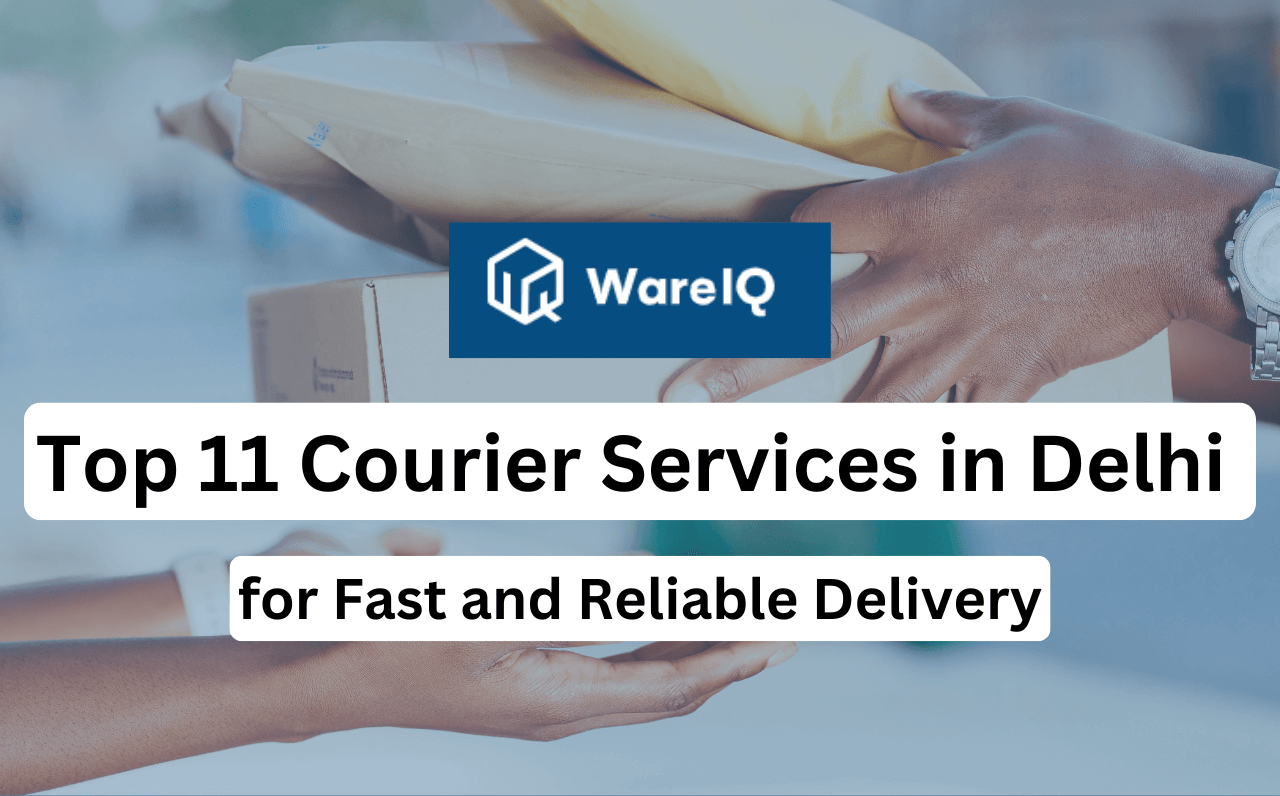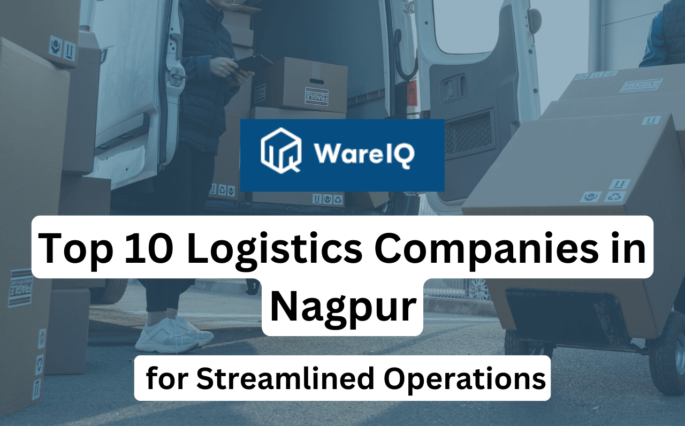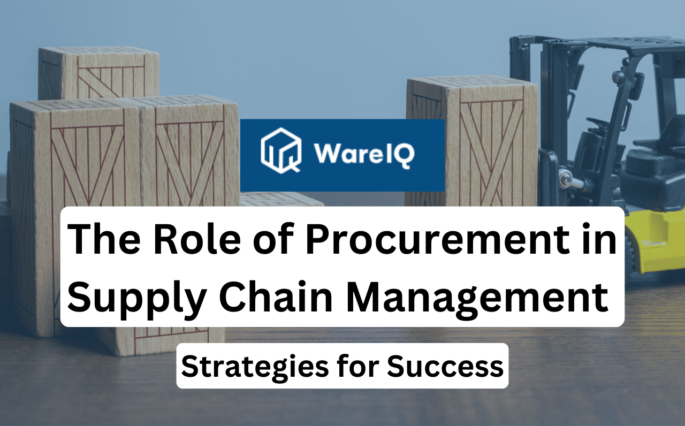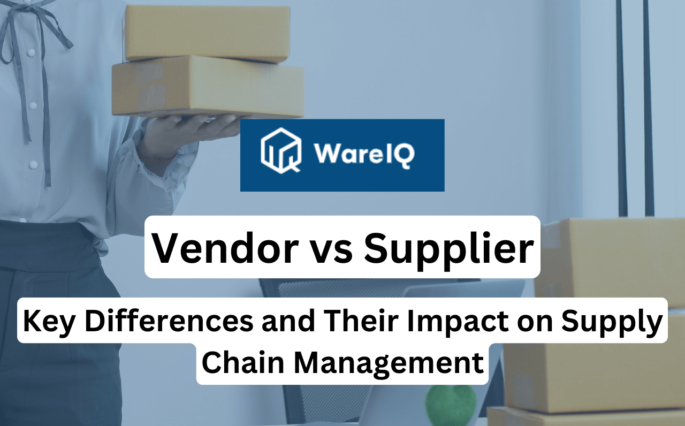Blogs

Top 11 Courier Services in Delhi for Fast and Reliable Delivery
Delhi, with its vibrant marketplaces and bustling streets, is not just India’s capital but also a booming centre for e-commerce. Ensuring timely and reliable deliveries in this fast-paced environment is no small feat, and businesses need courier services that can rise to the challenge. From the historic charm of Chandni Chowk to the sleek corporate corridors of Connaught Place, delivery success often determines customer satisfaction. Yet, choosing the right courier service can be a maze of decisions. Is your priority speed, affordability, or extensive reach? This guide unpacks the top 10 courier services in Delhi that offer a mix of reliability, speed, and innovation to help businesses thrive. Among these, WareIQ stands out as a robust partner for eCommerce brands. By leveraging an advanced SaaS platform and a pan-India network, WareIQ empowers businesses to streamline their logistics and delight their customers with faster deliveries. Curious to find out which courier services can give your business a competitive edge and how WareIQ can enhance your fulfilment strategy? Let’s dive into the details. Key Factors for Choosing a Courier Service Navigating Delhi’s logistics ecosystem requires a sharp focus on certain non-negotiables. The right courier partner can make or break your business operations, especially in a city as dynamic as Delhi. Here are the key considerations to guide your decision: Delivery Speed and Coverage: Delivery speed is often the defining factor for customer satisfaction. A delay of even a day can result in a dissatisfied customer or lost business. For businesses in Delhi, choose services offering same-day or next-day delivery options. Ensure the service covers key areas in Delhi, including outer districts and satellite cities like Gurgaon and Noida, to maximise your reach. Affordability: Courier costs can significantly impact your profit margins, especially if you handle high volumes. Look for providers offering volume-based discounts, flat-rate pricing, or cost-effective solutions tailored to small businesses. Compare rates for services like COD and reverse logistics, which often come with additional fees. Technology and Tracking: Customers expect real-time tracking for their shipments, and businesses need detailed visibility into their logistics. Choose a partner with robust tech integration, offering features like live tracking, delivery notifications, and seamless API compatibility with eCommerce platforms. Customer Support: Reliable customer support ensures smooth operations and timely resolutions of disputes or delays. Opt for courier services with 24/7 support teams and dedicated account managers for large-scale operations. Specialised Solutions: Services like Cash on Delivery (COD) are critical in India, where many customers prefer paying on delivery. Reverse logistics are equally important for handling returns efficiently. Ensure your courier partner excels in managing both forward and reverse supply chains. Consider whether the service offers additional perks like doorstep pickup, customisable delivery windows, or packaging support. Top 11 Courier Services in Delhi To help you make an informed choice, we’ve evaluated the best courier services in Delhi based on their speed, reliability, and affordability. These options are designed to cater to diverse business needs, whether you prioritise the fastest courier service in Delhi or affordable and local solutions. 1. WareIQ: Your Comprehensive E-commerce Fulfilment Solution WareIQ, a Y-Combinator-backed venture, offers a complete e-commerce platform that caters to multi-channel fulfilment across various sectors, including D2C, Marketplaces, Quick Commerce, and B2B (General Trade and Modern Trade). Our comprehensive offering includes: Extensive Fulfilment Network: Pan-India coverage with Seller Flex & FAssured compliant facilities in 12+ cities Last-mile delivery partnerships reaching 27000+ pin codes Versatile Multi-Channel Fulfilment Platform: Seamless integrations with popular marketplaces (Amazon, Flipkart, Myntra, Nykaa) Compatible with D2C platforms (Shopify, Magento, Woocommerce) Connections to WMS and ERPs Support for diverse fulfilment channels, including distributors and flagship stores Built-in analytics for performance evaluation Inventory LogIQ: AI-powered inventory management system Minimises stockouts and automates replenishment across channels Advanced Returns Processing: Tech-enabled quality control for returns HD media evidence capture and indexing Centralised storage of return information Reduces marketplace claims rejections Comprehensive Seller Support: Dedicated account management Assistance with APOB/PPOB and GST registrations NDR & COD verification services Experience the power of WareIQ's all-in-one e-commerce fulfilment solution to streamline your operations and boost your business growth. 2. Delhivery Delhivery is renowned for its tech-driven logistics solutions and extensive coverage across Delhi and India. It offers fast deliveries, robust tracking systems, and seamless integration with eCommerce platforms, making it a top choice for businesses seeking reliable courier services. It is particularly ideal for businesses aiming to scale their operations across multiple cities. 3. Blue Dart Blue Dart stands out for its premium express services, guaranteeing timely deliveries with high reliability. Its extensive reach and advanced technology make it suitable for handling high-value shipments. While the cost is on the higher side, the reliability justifies the investment for businesses focusing on quality. 4. FedEx FedEx, a global leader in courier services, excels in international and domestic shipments. With unmatched speed, precise tracking, and exceptional customer service, businesses aiming to cater to international customers will find FedEx to be a reliable partner. 5. DTDC DTDC is a household name in India, offering affordable courier solutions for small and medium-sized businesses. Its wide network ensures timely deliveries even in less-accessible areas of Delhi, making it a great choice for businesses looking for cheap courier services in Delhi without compromising reliability. 6. India Post India Post, the government’s postal service, remains an economical option with unparalleled reach across urban and rural Delhi. While slower than private providers, India Post is dependable for non-urgent shipments and its affordability makes it a staple for small businesses and individuals. 7. Gati Gati is known for its expertise in time-critical deliveries and logistics solutions. It caters to both B2B and B2C sectors, ensuring packages arrive on time, every time. This makes Gati a reliable option for businesses dealing with bulk shipments or large freight. 8. Ecom Express Ecom Express specialises in eCommerce logistics, offering fast COD services and efficient reverse logistics. Its extensive delivery network makes it a trusted partner for online retailers in Delhi, making it a good fit for businesses needing a courier service that understands the complexities of eCommerce. 9. Shadowfax Shadowfax is perfect for hyperlocal deliveries, specialising in last-mile connectivity. Leveraging a gig-economy-driven network, it ensures fast and efficient service, making it an ideal choice for local courier service in Delhi, especially for food delivery and quick commerce. 10. XpressBees XpressBees is a popular choice among Delhi’s eCommerce brands, offering reliable and fast courier services. With a strong focus on COD and efficient return management, XpressBees ensures a seamless experience for both businesses and customers. It is particularly suitable for businesses looking for the fastest courier service in Delhi combined with scalability. 11. Trackon Couriers Trackon Couriers combines affordability with reliable service, catering to both domestic and international delivery needs. It provides a balanced approach, making it a great option for businesses looking for cheap courier services in Delhi without sacrificing quality. Comparing the Services of Different Couriers In Delhi Courier ServiceDelivery SpeedPricingCoverageSpecial FeaturesWareIQFastLowPan-IndiaInventory LogIQDelhiveryFastModerateExtensiveTech integrationBlue DartVery FastHighExtensiveExpress servicesFedExVery FastHighGlobalInternational shippingDTDCModerateLowWideAffordable pricingIndia PostSlowVery LowExtensiveEconomical optionGatiFastModerateWideTime-critical deliveryEcom ExpressFastModerateExtensiveCOD and reverse logisticsShadowfaxVery FastModerateLocalHyperlocal focusXpressBeesFastModerateExtensiveFast COD servicesTrackonModerateLowWideBalanced offering Related - Courier services in Mumbai How WareIQ Enables Businesses to Manage Shipping and Fulfilment? WareIQ operates as a comprehensive courier service aggregator, empowering businesses to streamline their shipping and fulfilment processes. Here’s how WareIQ simplifies logistics management: Courier Aggregation and Multi-Carrier Shipping: WareIQ partners with multiple courier services, giving businesses access to a wide range of delivery options. The platform’s multi-carrier engine ensures businesses can select the best courier for each order based on factors like speed, cost, and service coverage. Seamless Technology Integration: WareIQ integrates effortlessly with major eCommerce platforms such as Shopify, Magento, Amazon, and Flipkart. Businesses can manage orders, shipments, and returns from a single dashboard, reducing complexity and saving time. AI-Driven Logistics Optimisation: WareIQ’s Inventory LogIQ uses AI to automate stock replenishment and minimise stockouts, ensuring a smooth supply chain. Advanced analytics help businesses identify cost leakages and optimise delivery routes for better efficiency. Enhanced Customer Experience: WareIQ’s custom-branded tracking pages and notifications offer a personalised delivery experience. Features like Estimated Delivery Dates (EDD) badges on storefronts boost customer confidence and reduce cart abandonment. Returns Management: With tech-enabled returns QC, WareIQ helps businesses streamline reverse logistics by capturing HD media evidence for claims. This feature ensures quicker resolutions and minimises disputes with marketplaces. Cost Control and Transparency: WareIQ provides businesses with tools to monitor and reconcile weight discrepancies, fake delivery attempts, and RTOs. Transparent pricing models ensure businesses can manage costs effectively without unexpected surprises. Related - Top 10 Courier Services in Chennai Conclusion Choosing the right courier service in Delhi is crucial for business success, but it doesn’t have to be overwhelming. Whether you prioritise speed, cost, or specialised services, this guide provides a roadmap to the best options available. For businesses seeking an edge, WareIQ offers an unparalleled fulfilment solution that combines technology, reliability, and scalability. Ready to transform your logistics? Partner with WareIQ and redefine delivery success. Related read: Top 10 Fastest & Affordable eCommerce Courier Services FAQs How can WareIQ help streamline shipping and fulfilment for businesses in Delhi?WareIQ integrates with multiple courier partners, providing a centralised platform to manage shipping and fulfilment. With AI-driven logistics optimisation, custom-branded tracking, and tools to reduce RTOs, WareIQ helps businesses in Delhi enhance efficiency and customer satisfaction.How do courier services in Delhi handle high-volume shipments?Many courier services, such as Delhivery and Gati, specialise in managing bulk shipments with dedicated solutions for businesses handling high volumes. WareIQ’s platform further streamlines this by providing multi-carrier shipping options to distribute large orders efficiently, making it one of the best solutions for local courier services in Delhi.Do courier services in Delhi provide eco-friendly shipping options?Increasingly, courier services in Delhi are adopting eco-friendly practices like electric delivery vehicles and minimal packaging waste. Businesses can explore partners that align with sustainability goals via WareIQ’s courier aggregation platform, which includes options for cheap courier services in Delhi without compromising on green logistics.Can businesses customise their delivery options for customers in Delhi?Yes, many services, including Shadowfax and XpressBees, offer flexible delivery windows, time-slot deliveries, and personalised COD options. WareIQ enhances this flexibility by enabling customised tracking pages and branded notifications for a better customer experience, making it an ideal partner for the fastest courier service in Delhi.What are the challenges of last-mile delivery in Delhi, and how can they be addressed?Traffic congestion, address discrepancies, and failed delivery attempts are common challenges. WareIQ mitigates these with advanced route optimisation, real-time tracking, and tools to minimise NDRs and RTOs, offering unmatched reliability for local courier service in Delhi.Are there courier services in Delhi that cater to specific industries, like food or pharmaceuticals?Yes, hyperlocal services like Shadowfax excel in food delivery, while specialised couriers cater to pharmaceuticals with temperature-controlled solutions. WareIQ’s integration with diverse courier partners ensures industry-specific needs are met effectively, making it an option for businesses seeking the best courier service in Delhi.
December 27, 2024
![Top 10 Logistics Companies in Thane for Superior Supply Chain Management [2025]](https://wareiq.com/wp-content/uploads/2024/12/Top-10-Logistics-Companies-in-Thane-685x426.png)







